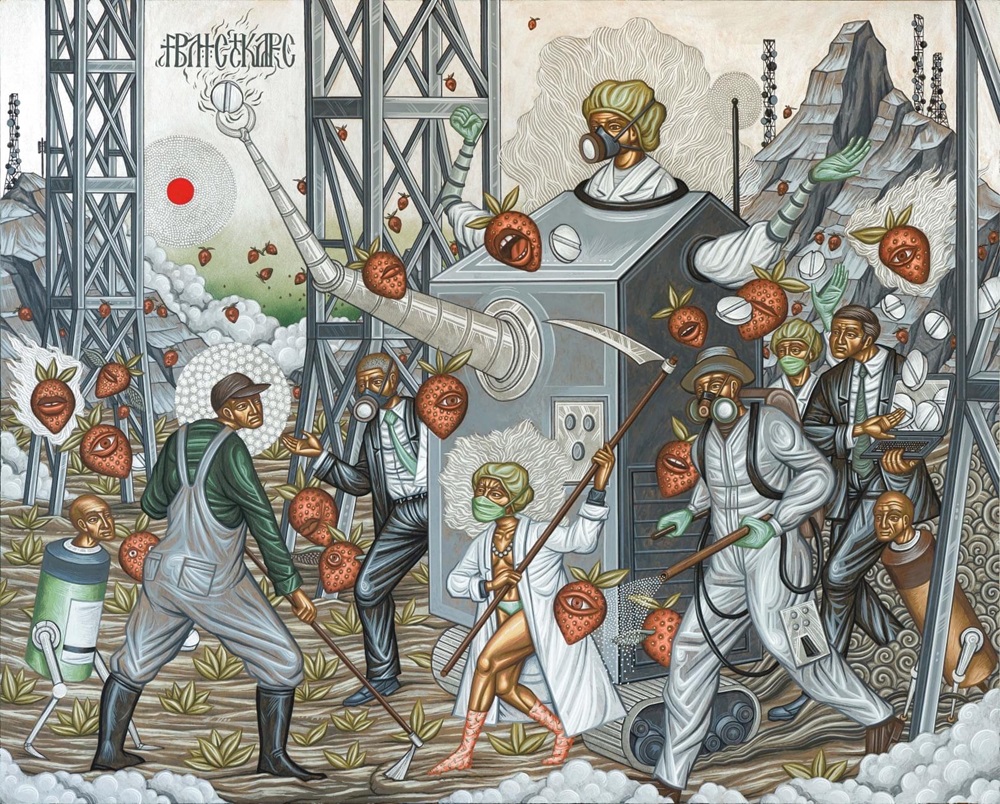
“Pasqua” in Hebrew means crossing, passage. Stelios Faitakis sealed his own passage in the artistic life of the country with his untimely death on 6 October 2023. He was only 47 years old. From his beginnings in street art, the painter adopted the stylized molding of the Byzantine figure and truly great art was first seen on the walls of the Byzantine Museum and in the collection of St. Catherine of Sinai, in his native Crete. He declared himself a ”religious painter” and though young in years, he was conscious of being part of a great tradition, saying boldly: ”I like the idea of speaking an artistic language that has deep roots… and at the end of the day it’s still a religious art form that I personally use it for exactly what it is, regardless of the subject matter.”
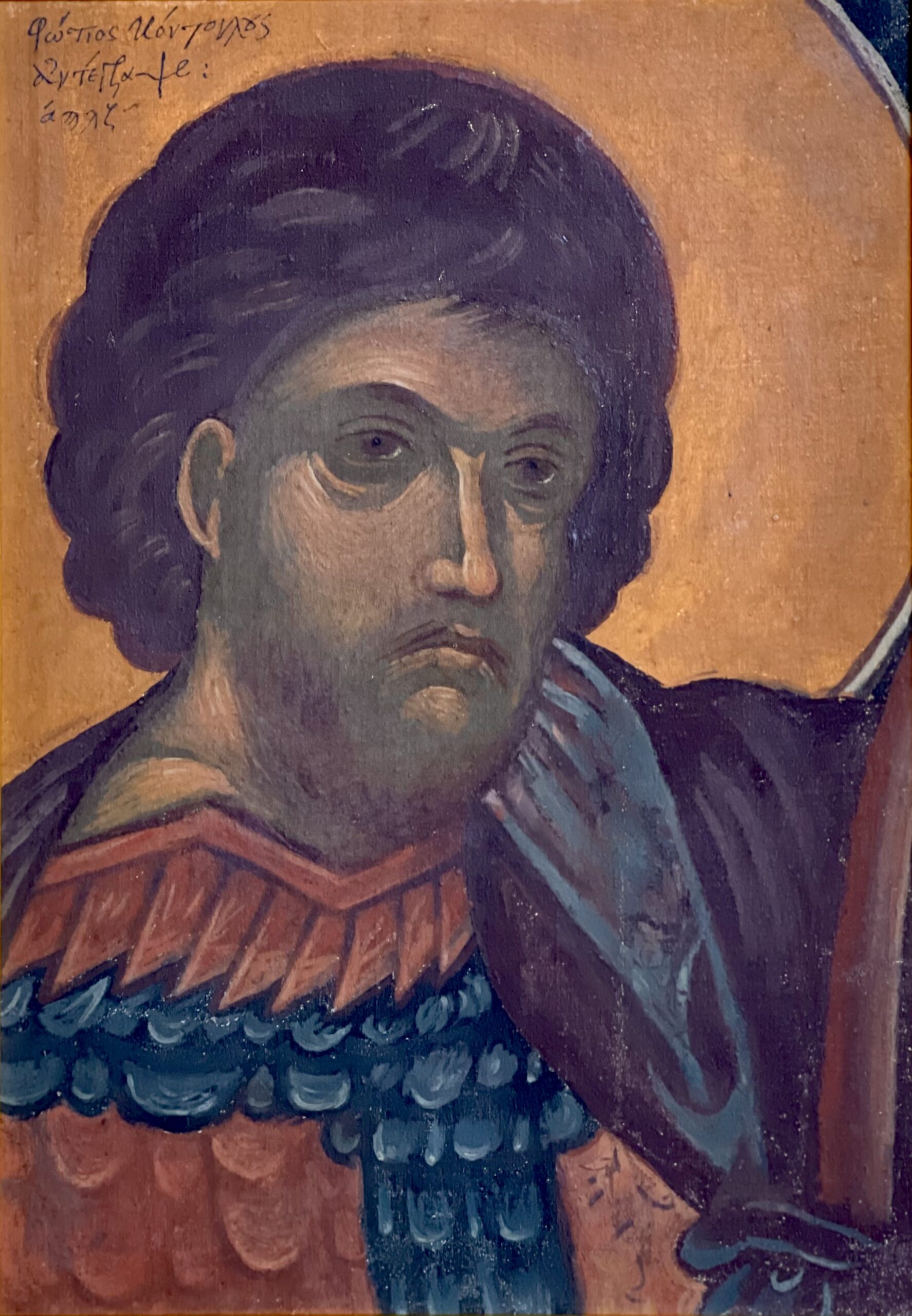
Fotis Kontoglou, Military Saint, 1937, Oil painting on wood
A group of seven Greek artists, all of them from Faitakis’ generation, meet at Roma Gallery to pay tribute to the prematurely lost painter. Their work in the exhibition is not exclusively a kind of tribute, but also reveals their common origins, elements that draw from a single root: inverted perspective, linear executions and geometric patterns, frontal arrangement of forms, absence of a third dimension, everything that the Byzantine painting language teaches is creatively recreated in compositions of cosmic content. The aim is therefore to highlight the way in which artists of the younger generation have exploited and incorporated elements of our painting tradition in their artistic reflections.
Kostas Lavdas, Manolis Bitsakis and Fikos painted works especially for the purpose of the exhibition. Lavdas dedicates to him a monumental composition in dimension, based on geometric forms and echoing the spirit of the revolutionary man, the same spirit that Faitakis praised. Bitsakis encounters Faitakis in the paradoxical element, referring to images – visions of the mystical or to the synaxaria of saints, while Fikos depicts him in a picture of a fighter in a ninja uniform in a golden plain (Faitakis loved and practiced martial arts systematically).
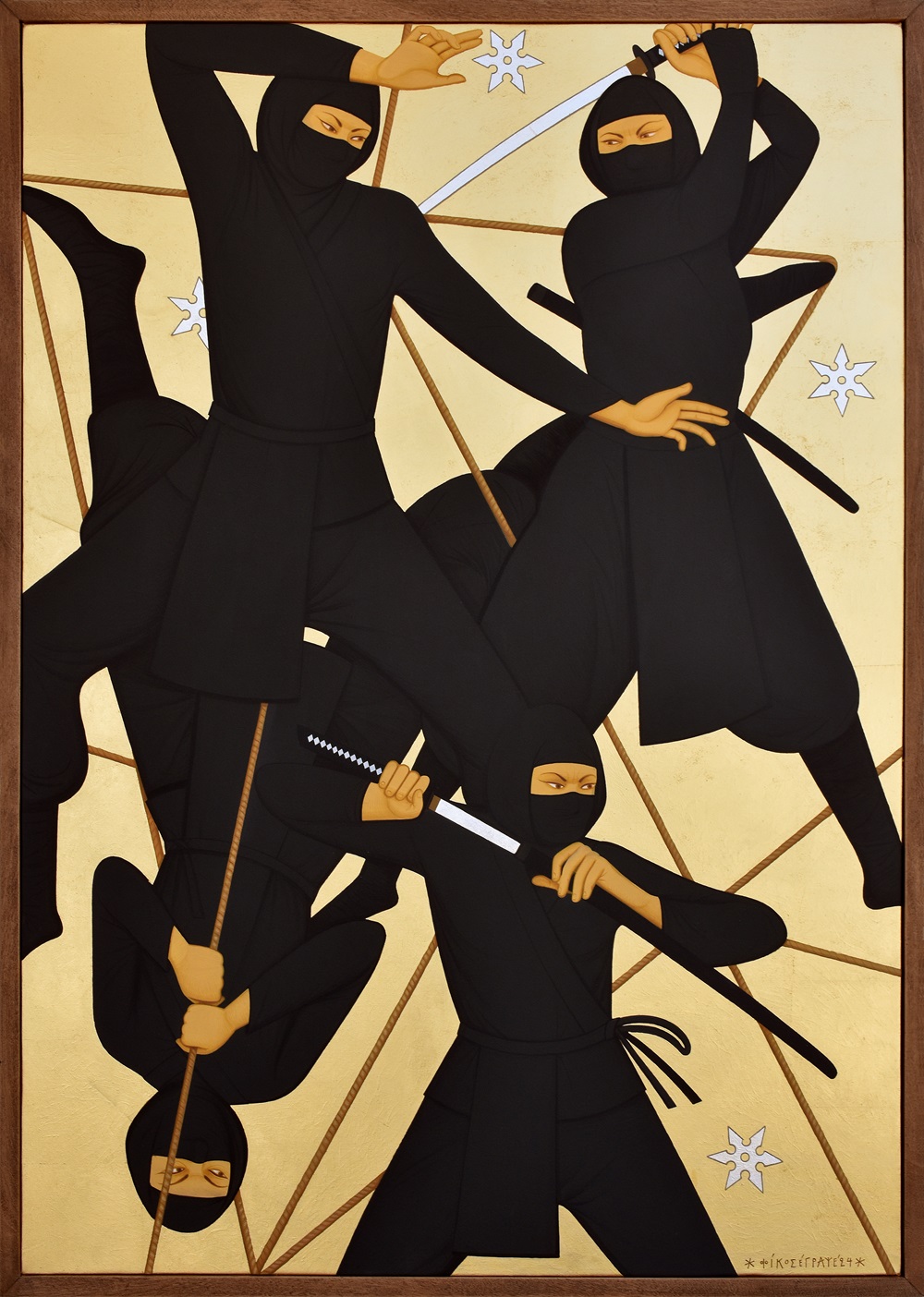
Fikos_NInja_2024_Acrylic and gold and silver leaf on canvas, 103x73cm, 2024
Georgia Fambris also places her fragmented figures in a timeless landscape, making use of the body and idealizing it through unholy allusions in the same way that a sacred icon projects the body of a martyr. Equally arbitrarily, Nikos Moschos fishes from Christian iconography the theme of the “Annunciation of the Theotokos”, rendering not her venerable form, but an everyday person as an entity helpless in the face of what transcends him.
Fotis Varthis represents the art of engraving with three compositions, drawing from the reservoir of tradition. The solid Byzantine drawing he has conquered gives voice to folk tales, without being deadened, disconnected from the rhythms of modern life. Ioanna Kafida also appropriates elements of folk tradition as a means to narrate her own “Vaioforo”. A painterly handiwork, which belongs to the doctrine of an artifice with a folk character. As she confesses, while she was painting it, she was reminded of the words of Kontoglou: “Tradition is called so because with it is handed down from generation to generation what man has loved and honoured and made the essence of his life.”
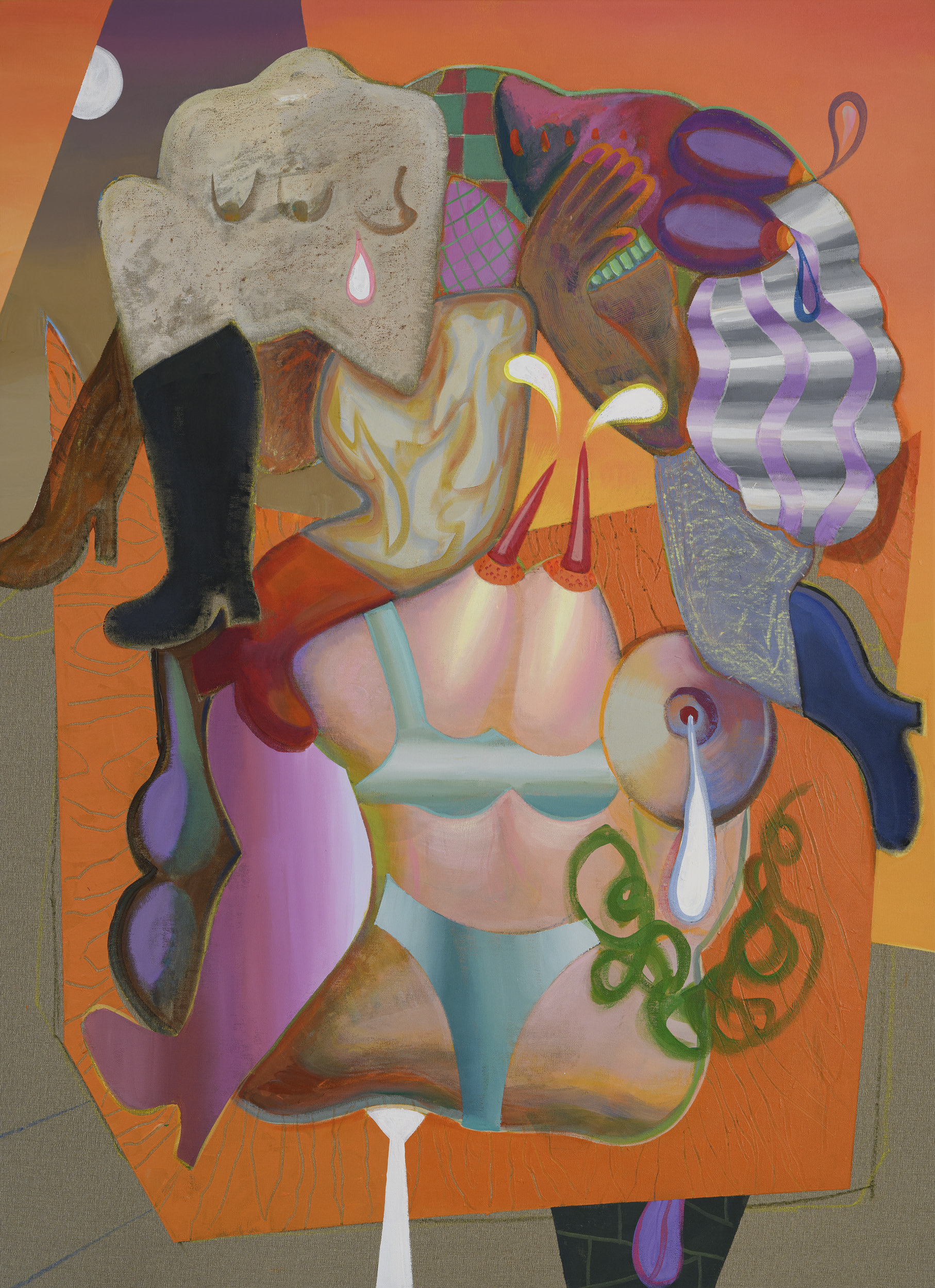
Georgia Fambris-The-misunderstanding of inner explotions-137X99-acrylics-and-pastels-on-canvas-2023
In the present day and in Roma, Fotis Kontoglou has a strong presence in the form of a military saint from Perivlepto in Mystras. The conservation and cleaning of icons that the painter undertook in the castle town in 1936 enabled him to complete the adaptation of Byzantine art types to his personal idiom. But the painter did not only paint icons. He was equally fond of travellers and corsairs and even wrote a book about them entitled ‘Untamed Souls’. The great artist and thinker discovered the treasure trove of Byzantine painting and dared to do something unique in his time: to squeeze secularism into the clothes of spirituality, to consecrate the pirate, the warrior, the murderer. From the collection of Dionysis Fotopoulos, a central place in the gallery is occupied by “Louizos Marotos“.
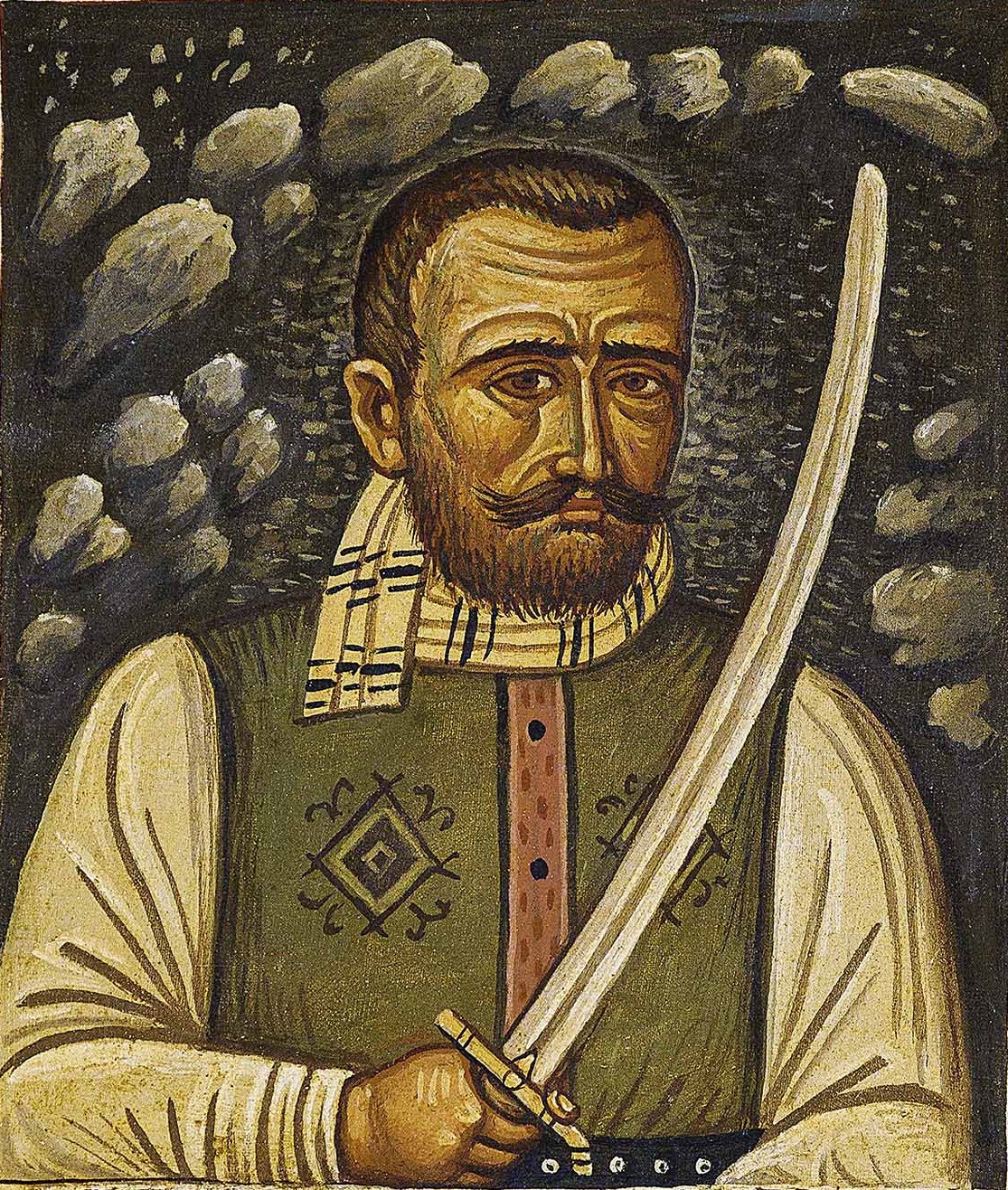
Fotis-Kontoglou-Louizos-Marotos-33×28-cm
But aren’t these the heroes of Faitakis? Perhaps the most successful characterization is summed up in an article dedicated to him entitled “the hagiographer of barricades”. In the freedom of the subject, Faitakis had a personal, but essential, service to Fotis Kontoglou, as he was the first to transfer the Byzantine painting system to his secular painting. Like Kontoglou in the last century, Faitakis, with his choices, paved the way for Byzantine art to be expressed with a variety of references in contemporary artistic creation. In order to speak for his time, he boldly proceeded to inventions of a personal nature, to formulations with pop characteristics, embedded in a neo-Byzantine style, against the mainstream that wants the artist to express himself through digital means.
And while his exhibitions were few and far between, his participation in international biennials brought his art decisively abroad. By his example, Faitakis confidently armed young artists to insist on painting that was not the current currency of the day; thus, though short-lived, the painter’s passage was decisive for his entire generation. It is not closed and will be adequately valued in the future.

Kostas-Lavdas-Untitled-2023-Acrylic-on-canvas-184-x-185-cm
Faitakis was a peculiar believer. He showed everyday citizens as carnage, photo-captured rebels in a hell opening up in the streets of big cities, with the feeling of a believing painter. Science may have marched for centuries indifferent to the dogmatic imperatives of religion, but, in the painter’s consciousness, it became a “dogma” itself. Scientific monomania he illustrated, the cult of technology he criticized. The spirit of the painter is echoed in the work entitled “For the Improvement of Agriculture“, which is being presented to the Greek public for the first time (it has been exhibited at the Paris School of Fine Arts, April-March 2022).
About the Artists
Fotis Varthis (1983) was born in Athens. After completing his studies in graphic design, he studied at the Athens School of Fine Arts. In 2015 he graduated from the 1st Printmaking Laboratory. He has participated with his works in many exhibitions in Greece and abroad.
Ioanna Kafida grew up in Volos and lives in Athens. She studied painting at the Athens School of Fine Arts (ASFA), with professors D. Mytaras and Ch. Botsoglou She completed her postgraduate studies at the University of West Attica in the Department of Educational Administration with the subject “Aesthetic Leadership”. Since 2023 she is a lecturer at the 6th laboratory of the ASFA (responsible professor G. Kazazis). Her works belong to public and private collections. She has participated in many group and solo exhibitions, in 2015 in Vienna, in 2010 and 2007 at Gavras Art Gallery in Athens and in 2003 at Metaxourgeio in Volos.
Kostas Lavdas (1980) was born in Athens. He studied graphic arts and is a graduate of the Department of Studies in Greek Culture of the Hellenic University of Athens. He is a founding member of the illustration group “Pendeliko Laboratorio” and the visual arts platform NI. Since 2009 he has participated as a lecturer in scientific conferences and has published in scientific journals. Since 2003 he has presented his paintings in various group exhibitions and five solo exhibitions.
Nikos Moschos (1979) was born in Heraklion, Crete. He studied at the Athens School of Fine Arts (1997-2003), lives and works in Athens. He has held nine solo exhibitions and participated in several group exhibitions in Greece and abroad. At the same time he has created works for books, cd’s, films, magazines, newspapers etc. His works are in the Benaki Museum (Athens), Fondazione Orestiadi (Sicily), Schirm/Sammlung-Schirm Collection (Berlin), PTE Fine Arts (New York), Bernard Cheong Collection (Singapore), A. Krausser Collection (Dubai), Kopelouzou Collection (Athens), Velimezis Collection (Athens), Antonis and Azia Hadjioiannou Collection, Sotiris Felios Collection (Athens) and other collections in Greece and abroad.
Emmanuel Bitsakis (1974) was born in Athens. He studied at the Department of Philosophy, Pedagogy, Psychology of the University of Athens and then at the Athens School of Fine Arts, where he studied painting with Chronis Botsoglou. From his early works until today he insists on the miniature representation of persons and landscapes with emphasis on detail. He assembles disparate iconographic motifs, which he handles with humour and skill. She uses techniques of various origins, from the miniatures of the Middle Ages, the iconography of the Cretan School, the early Renaissance and pop culture, composing a collage of references. He has had eight solo exhibitions in Athens, London and Brussels, and has participated in group exhibitions and international fairs in Greece and abroad. She lives and works in Athens.
Stelios Faitakis (1976-2023) was born in Athens. He graduated from the Athens School of Fine Arts with Rena Papaspyrou as professor, while he also attended hagiography courses. His works have been presented in numerous solo and group exhibitions in Greece and abroad. Apart from painting, he has been systematically practicing martial arts and has attended seminars on osteopathy and elements of traditional Chinese medicine.
Fikos (1987) was born in Athens. As a teenager, he started to paint everyday images of the city, up to comics and complete landscapes. He studied Byzantine painting under the tutelage of G. Kordis, with whom he worked professionally in the illustration of sacred temples. At the same time, he developed his personal painting idiom and became involved in street art. Using graffiti techniques, he manages to converse with a tradition that reaches back to Byzantium and Kontoglou. His interest in contrasts and his attempt to debunk the myths that follow them have led him to synthesize a new painting style of “modern Byzantine” by combining his beloved Byzantine tradition with contemporary painting trends. His work has been presented in exhibitions, museums and public spaces in Greece and in several countries abroad.
Georgia Fambris (1973, Genoa) studied painting and Byzantine iconography at the School of the Holy Metropolis of Piraeus and has worked as an icon painter in Greece, Cyprus and the United States. In her most recent work, her practice revolves around the investigation of the female experience through an existentialist lens. With the female body at the centre, she formalistically examines a personal position and view of the world. In this artistic process Fambris chooses different expressive media, from painting and video to weaving.
He has had 5 solo exhibitions and has participated in more than 20 group exhibitions in prestigious art exhibitions and museums in Greece and abroad, such as the National Archaeological Museum of Athens, the Athens Art Gallery, the Museum of Byzantine Culture of Thessaloniki, the Museum of Contemporary Art of Sicily, the Villa Croce Museum of Contemporary Art in Genoa and Art Madrid, as well as the 6th Athens Biennale, among others.
Opening Night: Tuesday, 23.4.2024, 19:00
Duration: 23.04.2024 – 25.05.2024
Curated by the Art Historian Yorgos Mylonas
Roma Gallery: Roma 5, 10673, Athens.
Opening Hours: Tuesday, Thursday, Friday 10:00 – 20:00, Wednesday , Saturday 10:00 – 16:00
Admissions Free



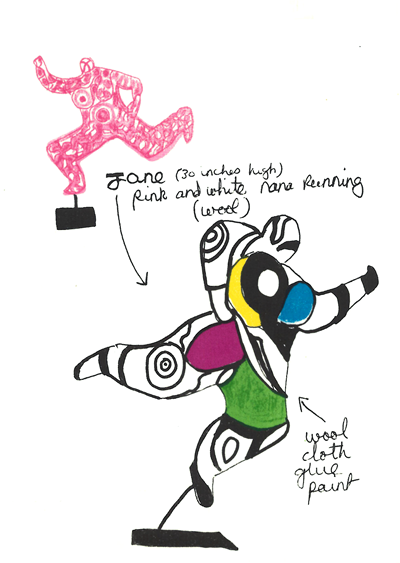
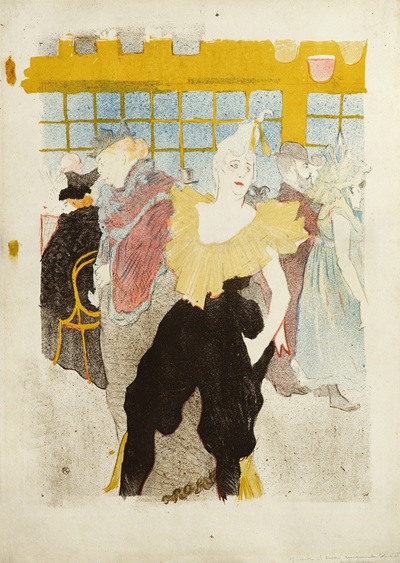


Leave A Comment